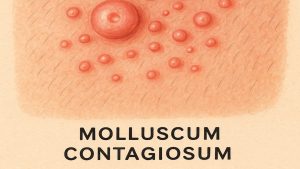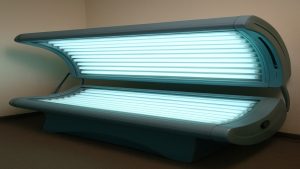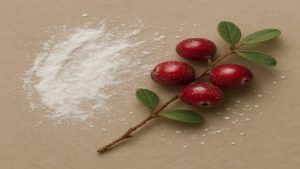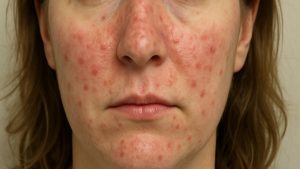Tretinoin is a clinically proven topical treatment that improves acne, skin texture, and visible signs of ageing. As a form of vitamin A, it accelerates cell turnover, helping to reveal clearer, smoother skin with consistent use.
This article explains how tretinoin works, what results to expect over time, and how to maximise its benefits safely.
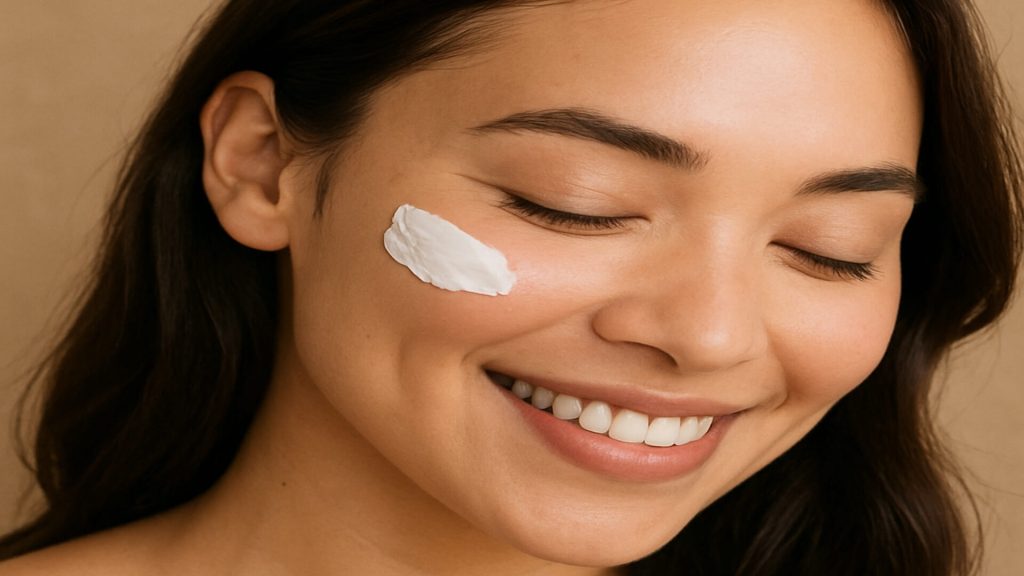
Understanding Tretinoin & How It Works
Tretinoin is available as a cream, gel, or lotion and is applied in a pea-sized amount once daily. It is most often prescribed for acne but also helps reduce fine lines, sun damage, and uneven tone [1,2,3].
As a derivative of vitamin A, tretinoin promotes faster skin cell renewal and prevents clogged pores. Research shows that it increases epidermal proliferation and collagen synthesis, leading to healthier, smoother skin [2,3].
Starting Tretinoin: What To Expect
Mild irritation is common when beginning tretinoin treatment. Temporary redness, peeling, and dryness may occur as the skin adjusts [4]. This is known as the “retinisation” period.
Some individuals also experience an initial acne flare, sometimes called a purge phase, as pores begin to clear [8]. The NHS notes that these effects typically settle as skin tolerance builds [4].
To ease adjustment:
- Apply every other night for the first two weeks
- Use a moisturiser after application
- Avoid harsh exfoliants or alcohol-based products
Tretinoin Results Timeline
Visible results develop gradually with consistent use. Most improvements appear between 8 and 12 weeks, with full results after several months of regular application.
| Time Period | Phase | What To Expect |
|---|---|---|
| Weeks 1–4 | Adjustment Phase | Redness, peeling, or mild purging as skin adapts [4,8]. |
| Weeks 4–8 | Visible Changes Begin | Texture begins to smooth, breakouts start to reduce [5,7]. |
| Weeks 8–12 | Noticeable Results | Fewer acne lesions and lighter dark spots [3,6]. |
| After 12 Weeks | Long-Term Benefits | Clearer skin, even tone, and improved firmness [6,9]. |
Table 1: General tretinoin results timeline and expected improvements
Patience is essential. Studies show that acne lesions may decrease by up to 40% after 12 weeks of tretinoin use [11], with ongoing improvement for pigmentation and fine lines beyond three months.
Tretinoin Effects & Benefits
Tretinoin provides multiple clinically supported benefits for acne and photoaged skin.
Reduces Acne & Prevents Breakouts
Tretinoin helps keep pores clear, reducing both inflammatory and non-inflammatory acne. It also prevents new blockages from forming. NICE recommends topical retinoids, including tretinoin, as a first-line therapy for mild to moderate acne [10].
Improves Texture & Tone
By stimulating cell turnover, tretinoin smooths rough texture and fades dark marks caused by post-inflammatory pigmentation [6,9]. Consistent use helps create a brighter, more even complexion.
Minimises Fine Lines & Early Ageing
Tretinoin stimulates collagen production, softening fine lines and reducing visible signs of photoageing [6]. Long-term use can improve firmness and elasticity, though deep wrinkles may require additional treatments.
| Benefit | Mechanism | Evidence |
|---|---|---|
| Acne reduction | Unclogs pores and reduces inflammation | NICE, 2021 [10] |
| Smoother texture | Accelerates epidermal renewal | Weiss et al., 1988 [3] |
| Fades pigmentation | Promotes exfoliation and turnover | Bulengo-Ransby et al., 1993 [9] |
| Reduces fine lines | Boosts collagen synthesis | Sitohang et al., 2022 [6] |
Table 2: Clinical benefits of tretinoin and supporting evidence
Tips For Success With Tretinoin
A gentle, consistent routine helps maximise results and minimise irritation.
- Start slowly: Use a low strength such as 0.025% and increase as tolerated [4,8].
- Moisturise regularly: Apply a non-comedogenic moisturiser after tretinoin to prevent dryness [4,8].
- Use sunscreen daily: Broad-spectrum SPF 30 or higher is essential, as tretinoin increases sun sensitivity [2,7].
- Avoid harsh actives: Do not mix tretinoin with exfoliating acids until tolerance builds.
- Be consistent: Results rely on regular use over several months.
Monderma’s Custom Formula With Tretinoin
Monderma offers prescription-strength skincare tailored by UK-registered prescribers and dispensed through a GPhC-registered pharmacy.
Each formula is customised following clinical consultation and may include tretinoin alongside other evidence-based ingredients to target acne, ageing, and uneven tone.
| Ingredient | Strength | Description | Clinical Benefit |
|---|---|---|---|
| Tretinoin | 0.01–0.1% | Prescription vitamin A derivative | Boosts cell turnover and smooths texture |
| Azelaic Acid | 5–20% | Naturally derived anti-inflammatory | Reduces pigmentation and inflammation |
| Niacinamide | 2–4% | Vitamin B3 derivative | Supports barrier and brightens tone |
| Adapalene | 0.1–0.3% | Topical retinoid alternative | Improves acne with less irritation |
Table 3: Key ingredients used in Monderma’s prescription formulas
Conclusion
Tretinoin remains one of the most effective treatments for acne, pigmentation, and early skin ageing. Results develop gradually, with visible improvement typically within 8 to 12 weeks and continued benefits with ongoing use.
Professional guidance ensures safe, optimised results and long-term skin health. Monderma’s prescription treatments, created by UK-registered prescribers, offer tailored solutions to support your journey toward clearer, smoother skin.
Content is for informational purposes only. Monderma treatments are prescribed following consultation. Results and timeframes can vary. Use as directed by your prescriber.
Bibliography
- Kligman, A.M. et al. Topical Tretinoin for Photoaged Skin. Journal of the American Academy of Dermatology, 1986, 15(4):836–859.
- Mayo Clinic. Tretinoin (Topical Route). 2025.
- Weiss, J.S., Ellis, C.N., Headington, J.T., Tincoff, T., Hamilton, T.A., & Voorhees, J.J. Topical Tretinoin Improves Photoaged Skin: A Double-blind Vehicle-Controlled Study. JAMA, 1988; 259(4):527–532.
- NHS. Acne Treatment. 2023.
- UK Meds. How Long Does Tretinoin Take to Work? 2025.
- Sitohang, I.B., Makes, W.I., Sandora, N., & Suryanegara, J. Topical Tretinoin for Treating Photoaging: A Systematic Review of Randomized Controlled Trials. International Journal of Women’s Dermatology, 2022; 8(2):e015.
- Miiskin. How Long Does Tretinoin Take To Work for Acne and Wrinkles? 2025.
- Miiskin. What Is the Tretinoin Purge? We Asked a Derm. 2025.
- Bulengo-Ransby, S.M. et al. Topical Tretinoin (Retinoic Acid) Therapy for Hyperpigmented Lesions. Archives of Dermatology, 1993.
- NICE. Acne Vulgaris: Management. NG198, 2021.
- Haider, A., & Shaw, J.C. Treatment of Acne Vulgaris. JAMA, 2004; 292(6):726–735.
Find your perfect skincare formula
Takes less than 2 minutes – see what your skin needs
Get Custom Formula